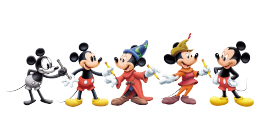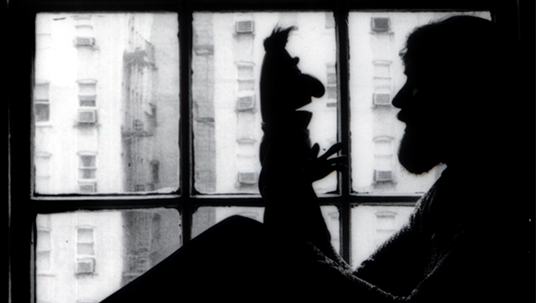By Jim Fanning
A dreamer and a doer, much like Walt Disney himself, Jim Henson created worlds of fantasy populated by a lovable, laughable cast of cuddly, cloth-based creatures, including (of course!) mild-mannered Kermit the Frog and self-fixated fashionista Miss Piggy. To watch his world-famous Muppets in action, it’s clear that here was someone in touch with his own inner child. A playful soul, this producer, director, performer, and businessman was one of a kind, a free spirit constantly inspiring and invigorating those around him with his genius and good-natured artistry.
“The most sophisticated people I know—inside they’re all children. We never really lose a certain sense we had when we were kids.” —Jim Henson
So it’s no surprise that Jim’s playfulness was part of his home life with wife (and fellow puppeteer), Jane, and their five children. “I think of us a little like a circus family when we were kids,” Brian Henson, one of Jim’s two sons, tells Disney twenty-three about living with the Muppet master as a dad. “It was a very creative, artistic environment,” says the puppeteer and chairman of The Jim Henson Company. “But the Muppets was what my father did for work, and so it wasn’t like we lived in a household full of Muppets. On the weekends, though, he would do things like say, ‘Okay, we’re all going to paint the kitchen today,’ and he would get a bunch of paint, and then we’d paint monsters and patterns. It was a very artistic and craft-like environment.”
Dad made even the mundane minutiae of everyday life fun. “My father used to make sound effects for everything he did,” recalls Brian, who, along with his sister and CEO of the Jim Henson Company, Lisa, accepted the Disney Legend honor at this year’s D23 Expo on behalf of their dad. “If he picked up a pen he would go ‘whoosh,’ or if he took the car keys out of his pocket there’d be a sound effect, or if he put honey on pancakes. He made a sound effect for everything he did. And we would all make fun of him for it, and he’d laugh, not realizing he was doing it. To this day, that’s one of the most endearing memories, because I don’t think I’ve ever met anyone else who does that,” Brian remembers with a grin.
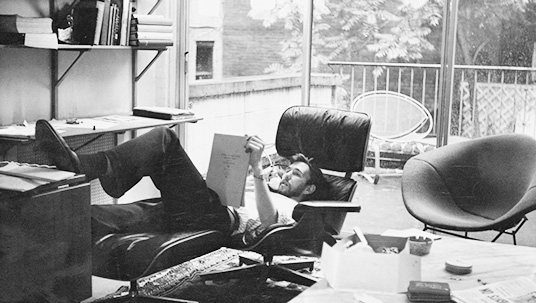
When asked which Muppet character performed by Jim was the favorite of his father, Brian revealed that it wasn’t Kermit nor Rowlf, but a lesser-known player in the Henson stable. If you guessed Captain Link Hogthrob, the “intrepid and well-fed” hero of the “Pigs in Space” segment of The Muppet Show, you’re right. “Link made me laugh the most,” Brian explains. “Whenever my dad had to be the authority figure with us kids at home, he was really uncomfortable with that role, so he would start to act pompous—he would make fun of himself while he was doing it because he was so incapable of disciplining us. He’d say, ‘Okay, this is now your father speaking and he would become like Link Hogthrob. I laughed the most when I watched Link Hogthrob because every now and then, my dad had to operate with authority, and that was an absurd place for him to be. He was making fun of himself when he performed Link Hogthrob.”
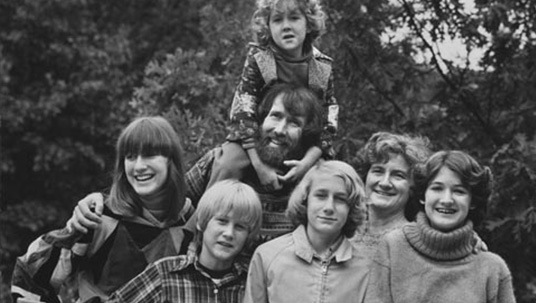
Though playful, papa rarely played sports with the children. “But he did go skiing,” Brian reveals. “He wasn’t very good at it, which was funny—but he kept going.” He’d play all kinds of card and board games, a passion he gained from his own parents. “We would also go on nature walks with my dad,” Brian continues. “We knew where every park and walk in the woods were in the area around where we lived [in Greenwich, Connecticut].”
Befitting his core identity as an artist, Jim was definitely a stop-to-smell-the-roses appreciator of all sorts, of every kind of beauty. He treasured everything from walking sticks, kite-flying, the harmonious colors of nature, and the reflection of the moon dancing on the water all the way down to the details of a Persian rug.
Jim was at play even in the high-pressure atmosphere on a TV or movie set—and for the famed Muppeteer, performing could involve folding his lanky six-foot-three frame under a couch or beneath a car seat; or in the case of Kermit’s signature performance of “The Rainbow Connection” in The Muppet Movie (1979), being crammed into a waterproof tank immersed in a swamp. Muppet performer Steve
Whitmire, who has acted as Kermit since Jim’s death in 1990, worked alongside his boss for 10 years.
“He was an amazing leader,” Steve tells twenty-three. “I have said for years—and I realized I was saying it before I thought about what it meant—that I loved working with Jim. And I never found myself saying I worked for him. Though technically we did, all of us. But it was so collaborative. He took suggestions from virtually everybody—from the crew all the way up the ladder. Everybody had input.”
Steve considers Jim’s gentle, collaborative approach to leadership a strength. “I think that strength comes from his being a Southern gentleman. He was from the South—I’m from the South, too—and there’s a certain dynamic to that politeness, especially for his generation, and the way people treated each other. It really came through in his running of the company. That’s inspirational, really hard to find.”
Brian observes that his dad “pulled the most out of people creatively, not by being demanding but by being embracing. His work ethic made working with him very rewarding and at the same time wonderful fun. My father really struggled to fire people, but if they were spoiling the atmosphere in the working environment, they were gone the next day.”
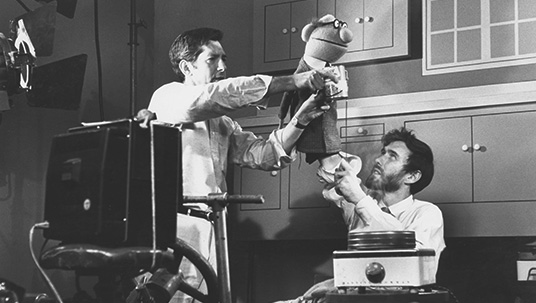
“There was a great deal of trust in his vision,” Steve affirms, “and we were all collaborating in that vision.” A concrete example of Jim’s openhearted sharing of both vision and recognition came when The Muppet Show won an Emmy as Outstanding Comedy–Variety or Music Series in 1978.
“I remember Jim’s Emmy acceptance speech very well because he made eye contact with me,” Steve, who was a young, newly hired puppeteer at the time, recalls. “I was in the third row, and he was looking at me. He was kind of uncomfortable onstage as himself to some degree, but he said, ‘I just want to let everybody know that this is not about me, it’s about our group and our group dynamic.’”
Steve recalls with a smile the more impish side of the Muppets’ leader. “Jim’s humor was very mischievous, very much like Ernie on Sesame Street—he’s always playing those jokes on Bert. There was certainly an aspect of Jim that very much was into light sarcasm, not mean-spirited, but just fun, mischievous, like the sitting-in-the-backrow-in-church-and-trying-not-to-giggle kind of humor.
“And we would work and get the giggles sometimes to the point where we’d have to stop shooting for
10 minutes. We’d start laughing so hard we’d start to cry. Jim would say that was the best part for him, all the laughter that we had while we were working.”
“’Appreciate each other for your differences and not for your similarities’ was a theme that went through all of his work. Clearly this was a wonderful message that got picked up all around the world. Everyone got it, everywhere.” —Brian Henson
“I like the absurd,” Jim told Disney News in 1989. “Absurd is taking what life really is and pushing it into an abstraction that people recognize. The most interesting characters I’ve created have a fixation or a trait you can exaggerate. As you exaggerate, it becomes funny, and people see that trait in themselves. There’s great value in being able to step back and laugh at yourself, at life, and at attitudes. Laughter helps you put everything in perspective.”
Jim not only incorporated that silly but sophisticated philosophy into every aspect of his productions and performances, but also into his home life. He was obviously a devoted family man, but “if you notice in most of his work, there’s almost never a nuclear family,” Brian points out. “That really set him apart from the other very popular family entertainers, where there was a strong emphasis on the traditional family. My father’s emphasis was on families coming together by being excited about each other’s differences and creating families—weird creatures and monsters coming together and all wanting to do something together and then finding that they love each other like a family.
“‘Appreciate each other for your differences and not for your similarities’ was a theme that went through all of his work. Clearly this was a wonderful message that got picked up all around the world. Everyone got it, everywhere. My father was actually a powerful force for peace.”
No wonder Jim made that amphibious peacekeeper Kermit a placid, serene green. And the frog’s gathering of his diversified (to say the least) group of friends to put on their shows illustrates Brian’s point about his peaceable dad.
So hats off to you, Jim Henson, and congratulations on becoming a Disney Legend. Thanks to you, all of us—the lovers and the dreamers—are free to romp in your wild, weird, and wonderful world.


